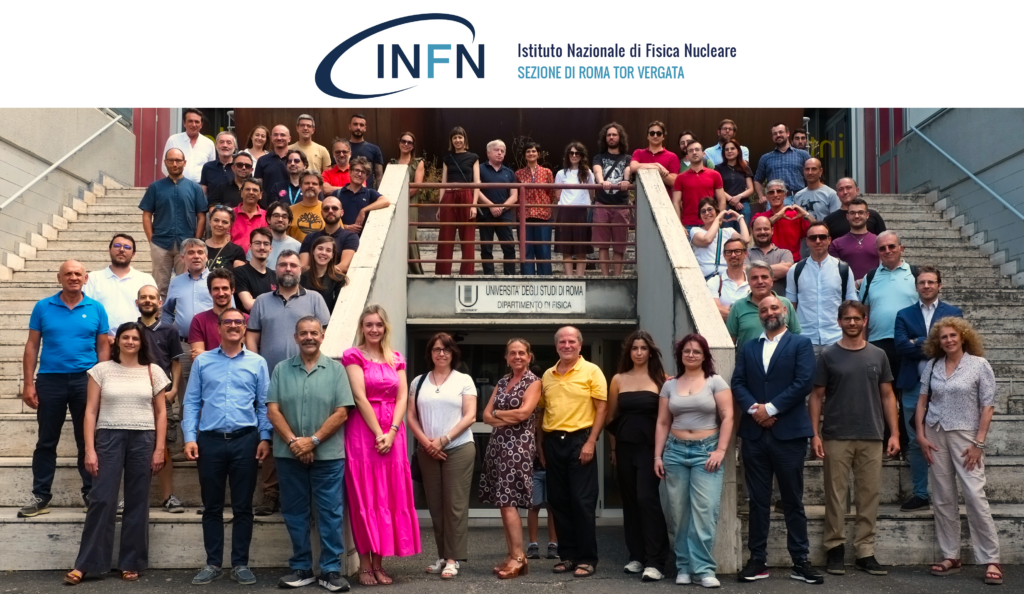
The Rome2 division was established in 1987 at the University of Rome Tor Vergata. Today, it includes around 200 people, consisting of 50 INFN staff members and 150 professors, Ph.D. researchers, and students.
At the facility, several experimental groups are active in particle physics (Atlas, G-Minus2, LHCb, and NA62), astrophysics (AMS2, Auger, CTA_RD, Dama, Fermi, Gamma400, Jem-Euso_RD, Larase, Lhaaso, Limadou, Lisa Pathfinder, Virgo, Wizard), and nuclear physics (Jlab12, Mambo). In the field of theoretical physics, research focuses on String Theories and Lattice Gauge Theories.
The division also contributes significantly to interdisciplinary research and R&D activities, particularly in neural networks, novel acceleration techniques, and advanced electronic technologies. Most of the research is conducted within an international framework.
Collaborations are established with:
- CERN, Geneva, especially for particle physics experiments
- ESRF, Grenoble, and BNL, Brookhaven, for nuclear physics, large observatories built in Tibet and Argentina
- The Russian Space Agency, the Russian Academy of Sciences and the Moscow Engineering and Physics Institute, for astroparticle experiments
- NASA, Washington, National Aeronautics and Space Administration
- CNRS, France, Centre national de la recherche scientifique
- EGO, Cascina (Pisa).
- Jefferson Laboratory, Newport, Virginia (USA)
- European XFEL, DESY, Amburgo (Germany)
- NASA, Washington, National Aeronautics and Space Administration
- SLAC National Accelerator Laboratory, Stanford University and U.S.Department of Energy Office of Science, Menlo Park, California, USA
- ESA, European Space Agency
- Fermilab, Batavia IL, (USA)
- Riken, Wako, Saitama, (Japan)



















































































































